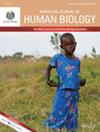Seasonality and Differential Growth Patterns of Body Dimensions of Children in a Rural Community of Yucatan, Mexico
Abstract
Background
Seasonality of human growth evinces the association between environmental variation, including the physical and the social–economic–political environment, and biological changes. The objective of the present study was to evaluate the seasonality of the growth of body dimensions (absolute and relative to height) of 2- to 5-year-old children and their differential increment (percentage changes) in the dry, rainy, and “nortes” seasons at Quintana Roo in Yucatan, Mexico.
Methods
The study was mixed-longitudinal. Repeated anthropometric measurements (height, weight, head circumference, sitting height, knee height) were recorded at the end of the dry, rainy, nortes, and again dry seasons of 31 preschool children in Quintana Roo, Yucatan. The derived variables (body dimensions relative to height) were the sitting height ratio (SHR) and knee height ratio (KHR). Data on seasonal variation in children's eating habits, availability of food items, and frequencies of signs, symptoms, and illnesses reported by the mothers were recorded.
Results
The participants grew more in height and other body lengths between the nortes and dry seasons. Body weight increased most during the nortes and least in the rainy season when the frequencies and duration of illness were higher. Differences in mean values between the seasons were higher for KHR than for SHR. Children's eating habits, the availability of food items, and the frequencies of signs and symptoms of illness were different in the seasons.
Conclusion
Seasonality and differential growth patterns of body dimensions were observed in preschool children. The growth of the lower leg length (knee height) was more sensitive to seasonality than the trunk (sitting height).


 求助内容:
求助内容: 应助结果提醒方式:
应助结果提醒方式:


